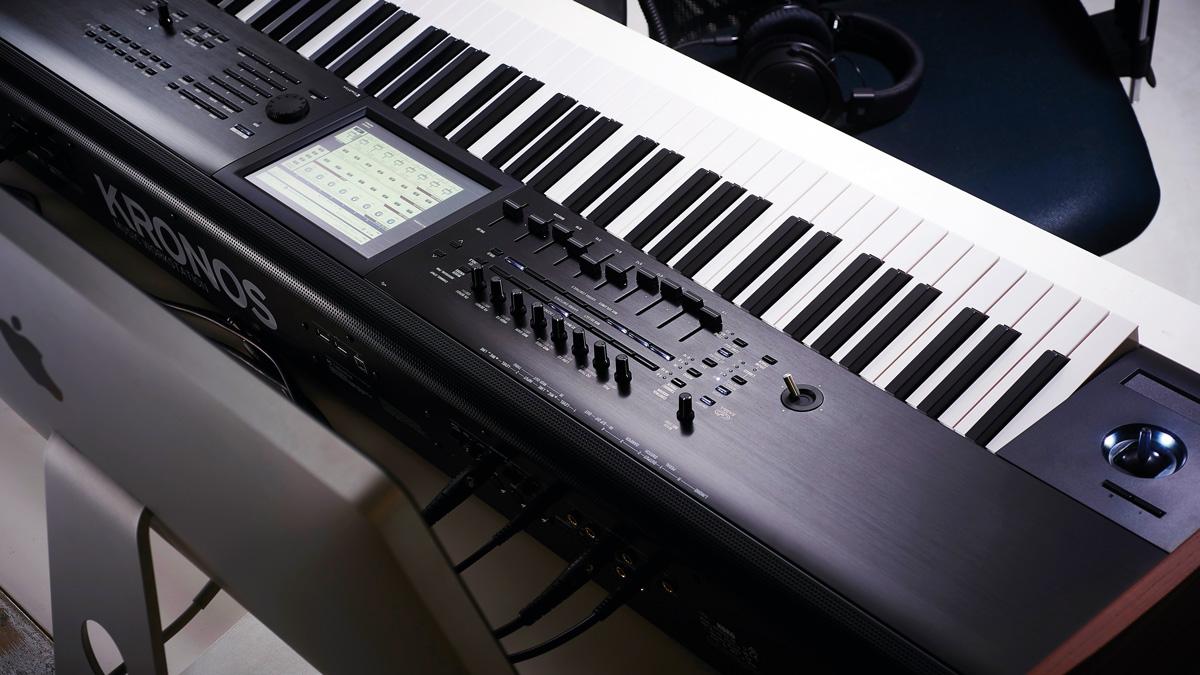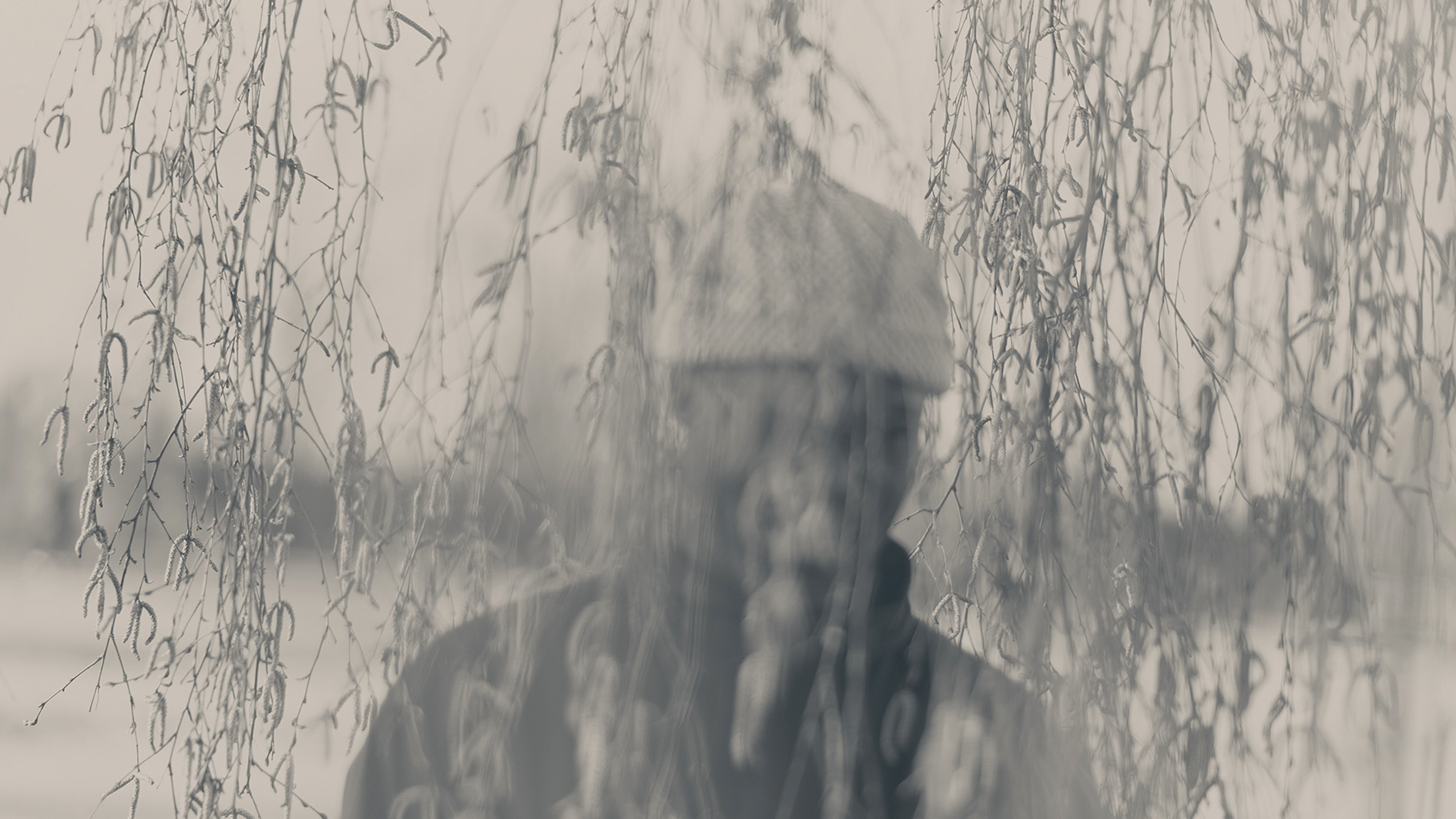
Prior to becoming a producer, Darren J. Cunningham (aka Actress) was destined to become a professional footballer until a serious injury curtailed his hopes and dreams.
A devotee of techno culture, the devastated teen turned to his second passion, DJing and music production. Receiving a grant to study recording arts at university, the inquisitive Cunningham moved to London and dived headfirst into underground club culture.
Within a couple of years, Cunningham was recording off-kilter tech house and sending hopeful demos to Detroit collective Underground Resistance. Debuting as Actress in 2008 with the critically acclaimed Hazyville on his own Werk Discs label, the artist quickly established himself as one of the leading voices in leftfield electronic music, consolidating his reputation on further LPs Splazsh and R.I.P before exhausting his production aesthetic on cryptic fourth LP, Ghettoville.
Following Actress’ return in 2017 with the comparatively light-hearted concept album AZD, Cunningham would widen his sonic palette and display his influences by collaborating on a reinterpretation of Steve Reich’s contemporary classic Different Trains and, later, Sin (x) an artistic tribute to Karlheinz Stockhausen. This year sees Actress’ tenth studio album, Statik, pay testament to Cunningham’s uncanny ability to transport the listener through a journey of celestial, meditative mood pieces.
People may not know that you signed for West Bromwich Albion as a teenager. In retrospect, had your career not been derailed by injury, do you think you would have chosen football over music?
“It would have been impossible for me to have answered the question at the time, but growing up I was 100% dedicated to football. I’d been playing since the age of 6 and signed for West Brom aged 8, so I was institutionalised and had tunnel vision when it came to the game. After I was sat in a hospital bed aged 19, staring starkly at the bonfire of my career, I had to make a decision.
“I’d grown up on music and always loved it from an aural dance perspective, but at the age of 12 I remember seeing a documentary that followed Shy FX when he was making one of his big anthem tunes. It gave me an insight into how to make music with computers and split samples and was the first time that I thought, wow; this is how jungle is done. That was a very important moment in terms of seeing the process, and it stayed in my head.”
How did things proceed from there?
“I’d had a recurring injury over the course of three years and at some point made a quick decision to buy some turntables and a DJ mixer package that I saw on the back of a music magazine. I practised how to beat match with my leg in plaster on a chair in my mum and dad’s garage. Mates would come round and play tunes and I learned how to mix, which I picked up quite quickly. It became a pastime for the six weeks that I was in plaster and was the first time I started thinking about taking my career in a different direction.
“I was constantly sending DJ mixes and tapes to a competition in a music magazine called Bedroom Bedlam. To be successful in football or music you have to be totally dedicated, so anything that could replace it had to require a level of devotion that was, if not on a parity, then very close. If you asked me now, I still don’t know if I’d be able to answer your initial question, but at the age of 44 I’d probably be erring towards music.”
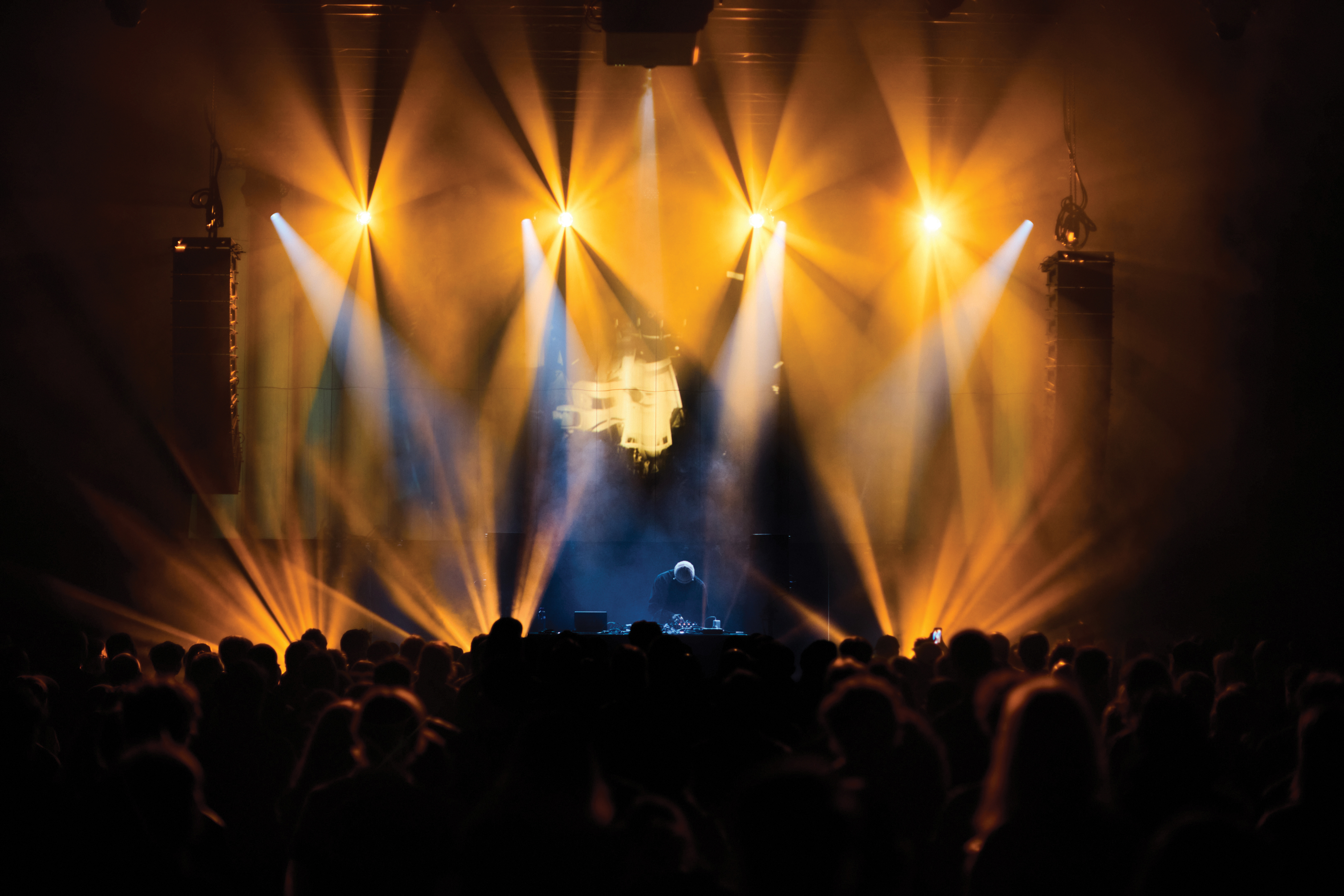
We understand that the PFA enabled you to take a degree course in recording arts…
“I’m a member of the Players Football Association for life, but it’s not like it is now. Had what happened to me then happened now, there would have been a period of counselling to help change from something that can be quite devastating for someone transitioning to a new career.
“That framework wasn’t there at the time, but I maintained a level of foresight in terms of wanting to achieve something in my life. I never received any counselling or spoke to anyone and had to lobby the PFA pretty hard to attend a private university because the fees were quite substantial, but it was a real help and I’m forever grateful for their support.”
Is that when you moved to London?
“I needed a hard new chapter in my life and have always had a rebellious nature, so I decided to move to London and just throw myself into the whole lifestyle. I wanted to go underground and find out what raving was all about, which is not for the fainthearted if you really go in on it. It wasn’t so much about the pilot course, it was more of an experiment about moving to London, and the best thing about it is that I met some great people who are my best friends to this day.”
Were you hoping that the course would be academically instructive or were you keen to just get on and start creating?
“I was a little bit naïve about the whole thing because I had to get through a stage where somebody asked if I could submit a sonic application. I had a small setup at the time consisting of a Roland MC-303 Groovebox, a mixer, a Dictaphone and a little guitar effects pedal, which I still use occasionally. All of my ideas were recorded from analogue to MiniDisc, so I sent that off and was invited to a one-to-one interview.
“When I got accepted, I was shown around all this gear and all I saw was buttons, faders and knobs. Being 18 or 19, I thought I’d get straight onto the mixers and boards and become a sound engineer, but after the first week the reality was that it was all going to be about physics, theory, acoustics and formulas. I remember thinking, this is cool, but this is school and not what I need to know.
“I was introduced to Max/MSP in 1999 and had no idea what it was – I thought, ‘what’s this primitive thing’? That was a mental time because I couldn’t see how I could apply what I had been studying over to what I actually wanted to do. As you suggest, I didn’t have the founding principles of synthesis and I was still operating from a music-making mindset.”
After making some early productions, you founded your own label, Werk Discs. Had you initially tried to find another home for your releases?
“The label didn’t come until 2005, so that was a little bit later. A crew of us had been raving and doing DJ nights, but I never sent music to any labels other than two tracks that I was really happy with that were cut to a dub plate at a Jamaican record shop in Acre Lane, Brixton. It had a cutting lathe, so I asked if I could bring some tunes and get some dub cuts.
“I brought my MiniDisc player in and cut two tunes – one of which happened to be Ghosts Have a Heaven, but I can’t remember what the B-side was now. I kept one dub plate for myself, gave one to a friend and sent the other to Underground Resistance/Submerge. At the time, I was also a big fan of Chicago producer Gemini on Green Velvet’s Relief Records, but noticed that he’d moved to a European label called Cyclo. I visited them with my MiniDisc player and played some demo tunes, which they really loved, but it didn’t line up with their genre-specific version of Chicago/deep French house. The music was, essentially, what I’m still doing today.”
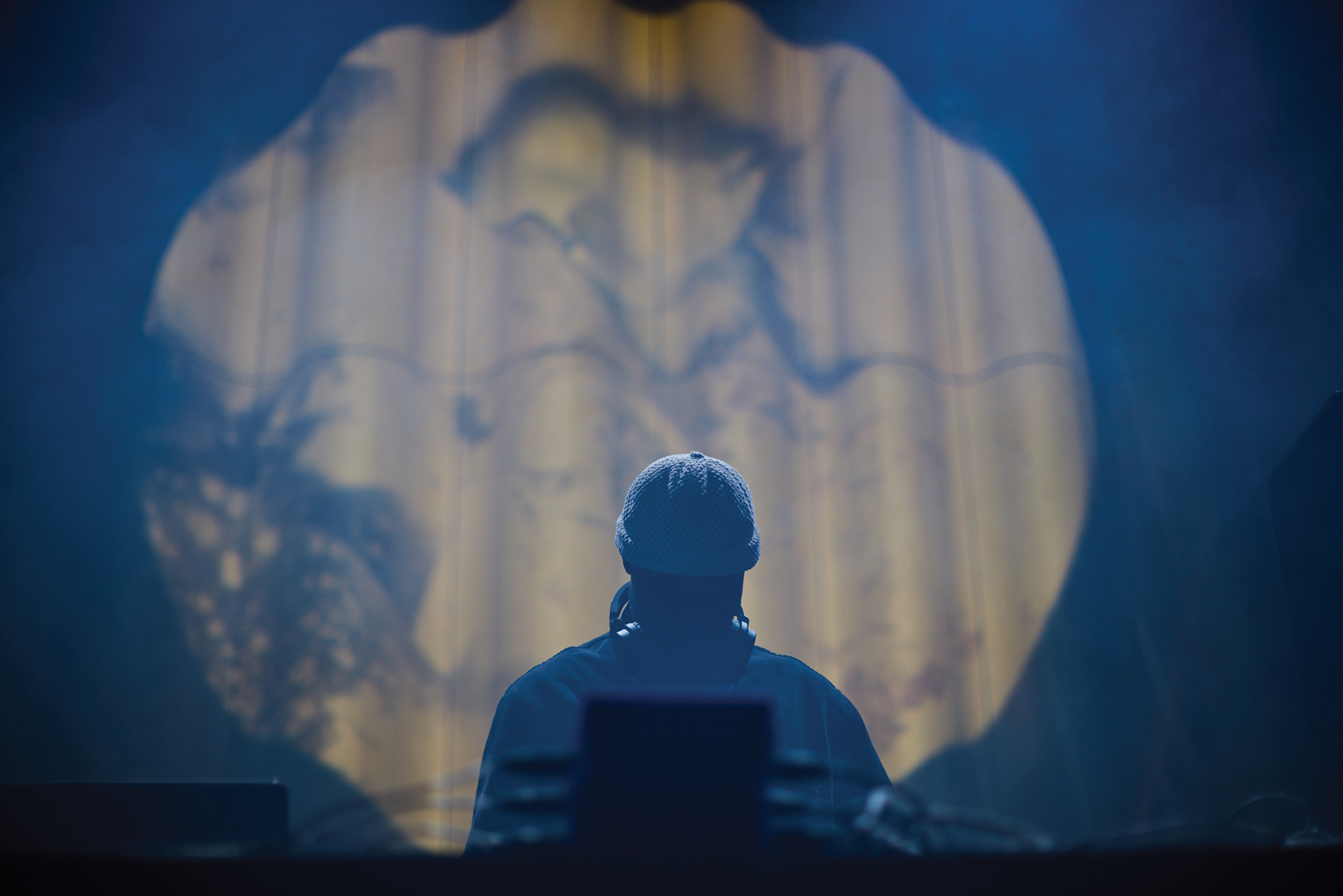
You hit the ground running with your debut LP, Hazyville, but there appeared to be a moment of disillusionment after the release of Ghettoville in 2014. You described the album as a “conclusion”. What was your thought process around that?
“I wasn’t struggling with anything mentally or having a problem with writing music because I make stuff every day whether it’s a melodic idea or whatever. It was more a sense of having spent a long time curating a selection or palette of sounds and always drawing from that bank. Before I started Ghettoville, I knew that I was exhausting that cache of ideas - everything was in a collapsed state, almost like that bonfire I talked about at the end of my football career.
“I recognised that rather than continue to write music or come up with album concepts, if I wanted to continue to do this I needed to change everything, which meant not just creating new sounds, but getting gear to generate new source material data and take the learning of my craft to a different level. I felt like I’d mastered the setup I’d built from the moment I arrived in London and was becoming more proficient.
“That’s when I wished I’d applied myself more to my university days, because it suddenly made sense why I would need to learn about acoustics and diffusion etc. I realised that for music to stay interesting to me and feel as though it was evolving, I’d surely have to evolve and find new inspiration. Ghettoville was a good bookend for that period of my life.”
Did you need to find a new narrative too?
“To be honest with you, from my first album I’d been looking at death a lot. Hazyville was an ode to my grandmother who was essentially my best friend and someone who I missed dearly, and there was also some residual stuff from the death of my football career. It was about mining and expressing that emotional content and by the time I got to Ghettoville I felt like I’d got rid of it all. Those first albums were my therapy or counselling period and so I guess I needed to move towards some sort of resurrection.”
That’s why samplers are so important because they allow you to organise noise, which, for me, is the best thing… because out of that organisation of sounds you can create the most beautiful thing
Those topics might have been easier to convey had you been a traditional songwriter. Without a lyrical outlet, do you find that it’s more difficult to express specific subject matters through music?
“It’s very difficult to answer questions based on how you did something because I often don’t really know myself. I can only say that I knew what the world looked like – it was grey scale and monotone, and therefore I didn’t want any colourful sounds. I didn’t even want synth sounds, because I found it very difficult to work with sounds that were shiny or pure in tone. I don’t know what to do with a synth sound, but I know what to do with a pure-sounding sine wave.
“I’ve always been drawn to soft pads and bell sounds, and what you might call static ‘white noise’. As a kid, I always found myself zoning in on the sounds around me with a sense of wanting to organise them, whether that’s a car, truck, birds or trees. That’s why samplers are so important because they allow you to organise noise, which, for me, is the best thing… because out of that organisation of sounds you can create the most beautiful thing.
“Where the ideas come from or how they’re modulated is a vast obelisk, but my life has always been about art and the power of what it can do. At first, I never associated music with art, but after university it became clear to me that music could be art. When I discovered that music could be physical and visual, I found it endlessly fascinating. If my music was visual art, it would be a mix of sculpture and graffiti.”
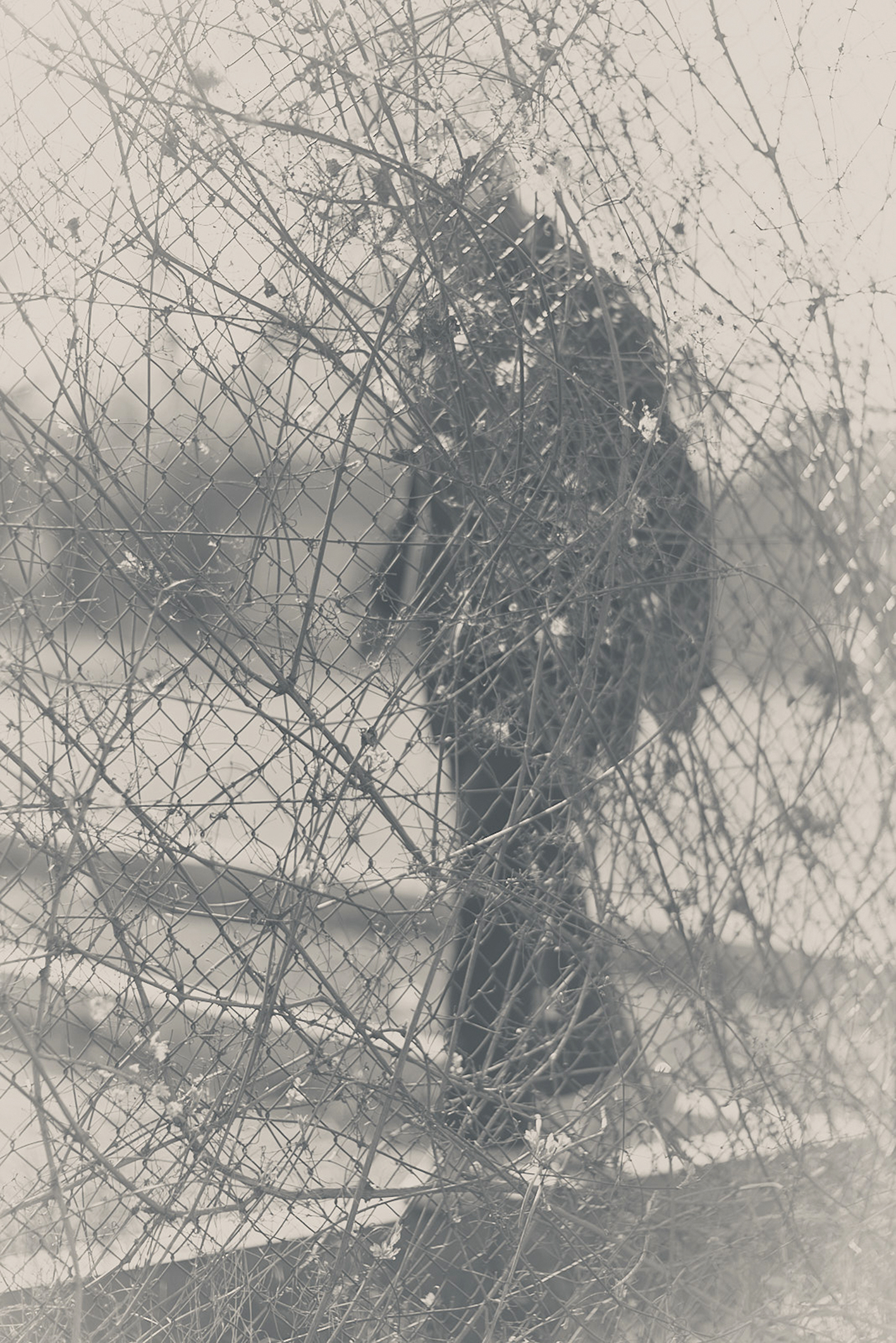
In respect of your productions, is there a clear delineation between the creative and, more technical, mixing stage?
“I’ve had different eras of making music. The era where my setup was very minimal consisted of a Japanese Kawai K5000 synthesiser, which I bought more for its beautiful silver aesthetic, but it also had a lot of macro MIDI capabilities for me to experiment with. I’d connect it to my Groovebox and once I realised I could use the keys rather than the buttons on the machine it opened up everything. My whole process is about experimentation because that sensation of being rewarded is unmatched.
“That’s where my music-making ethic comes from and although my music doesn’t contain lyrics, I do often make voice notes and sing ideas to give to somebody or actually put my own voice in there. At some point, I could see my identity forming and so I made an early decision to stick to that rather than make drum & bass, grime or by-numbers techno tunes. I wanted to look at all aspects of those things and amalgamate them in some way.”
My main quest is to dedicate my life to mastering the Kronos, which is going to take me into old age
Have you expanded towards a more complex setup while maintaining your core creative principles?
“My studio now has three different aspects. One station might be specifically based around the laptop controlling a sequencer, synth or drum machine, which is its own system, and I’ll have another laptop-controlled station that is more rack-based, containing an Eventide effects pedal, Emu E4X sampler and a Kurzweil K2500R synth. A third station is more intense, with a computer going to the Korg Kronos synth.
“My main quest is to dedicate my life to mastering the Kronos, which is going to take me into old age [laughs]. I try to keep things interesting by not staying in one position for too long, but there will come a time when I unify everything running off one sequencer until it’s all clocked together like a big nuclear Hadron Collider of sounds coming off multiple Elektron Digitakt machines.
“Historically, Ableton is the canvas. I mix everything there and bounce out the final pre-master, but I’ve used Reason and Cubase and there was a time when I was only using BIAS’ Peak sound editor, which is similar to Sound Forge. I don’t really do mix downs – I’ll just know how I want to hear something and give it to a mastering engineer.”
Are ideas pre-conceived or are you typically looking for a trigger of some sort?
“The inspiration is not always there, so I do like to have triggers that can provoke a response. I sometimes collect books and art catalogues from Sotheby’s in order to provide inspiration and there’s days where I’m not in the studio but I’ll have things up on my PC in another room giving me song event data.
“If anything jumps out, whether it’s a note, pattern, chord or velocity, I’ll investigate and take that into the studio. My whole working situation is about constantly analysing and keeping a close eye on that equilibrium between sound combinations, whether that’s referring to a hi-hat or the noise in-between that gels everything together.”
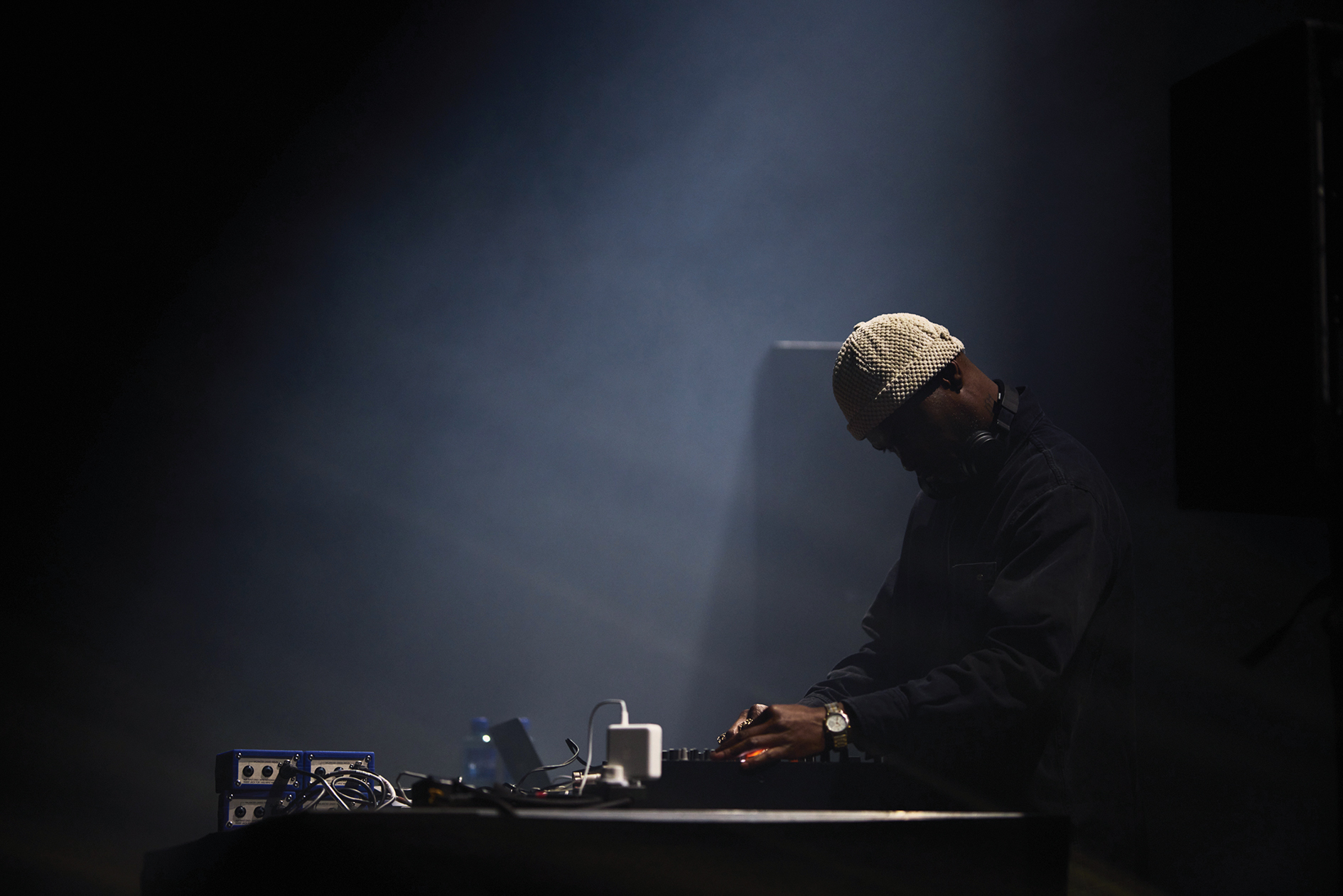
There’s always been an ambient element to your sound, but would you say that your tenth LP, Statik, travels further in that direction?
“I don’t really know what ambient is. In the context of Actress, you could say that Statik is the most ambient-sounding music I’ve made so far, but it’s not Brian Eno. All music is ambient and I’m always trying to get away from genre boxes, but more than anything else it’s quite a nostalgic album actually. It was all written in a very short space of time and the only time I’d ever made an album like that was Splazsh.
In the UK, it rains all the time, so a lot of my inspiration comes from weather, clouds, the sky and space
“I read a quote from a fashion designer who said that when he’s about to launch a collection, the first thing he does is go back to all his old work, unravels all of the ideas that went into them and then edits, edits, edits. I’d say that’s very close to what Statik is. You’d expect the title to come from levels of static or sounds that could be described as such, but I’m really interested in whether weather conditions and rain played a part. In the UK, it rains all the time, so a lot of my inspiration comes from weather, clouds, the sky and space.
“Not the stars, but the distant meteors or planets that look like pebbles in deep space and are so unreal to our perception of reality, yet technology allows us to actually see them. All of that coalesces into this extended study of art, music, my own self-study and other artists that I really respect, musically and visually.”
Take the track Static, for example, where shards of sound poke through condensed layers of noise. What might that dense sound field comprise of?
“Static ventured into another side of my process, which is about collage really. I have tracks that I might have used or won’t get used at all but have something in them, which could be a millisecond of sound that can be taken out and placed into another track. In terms of the track’s overall sound, I think that’s just a lot of experimentation over a period of time that’s probably either been on my computer or is on the Kronos as an experiment that I’ve continually worked on until I’ve managed to get to a point where there’s something workable enough to use.
“I can’t remember how it was put together, but I’ve always really liked music by Alva Noto, Basic Channel’s Chain Reaction stuff, dub, reggae, and all the Raster Noton stuff. I’ve just got this memory bank of buying records across all genres and my brain automatically takes from certain things, so when it comes to actually modulating ideas they’re already there.”
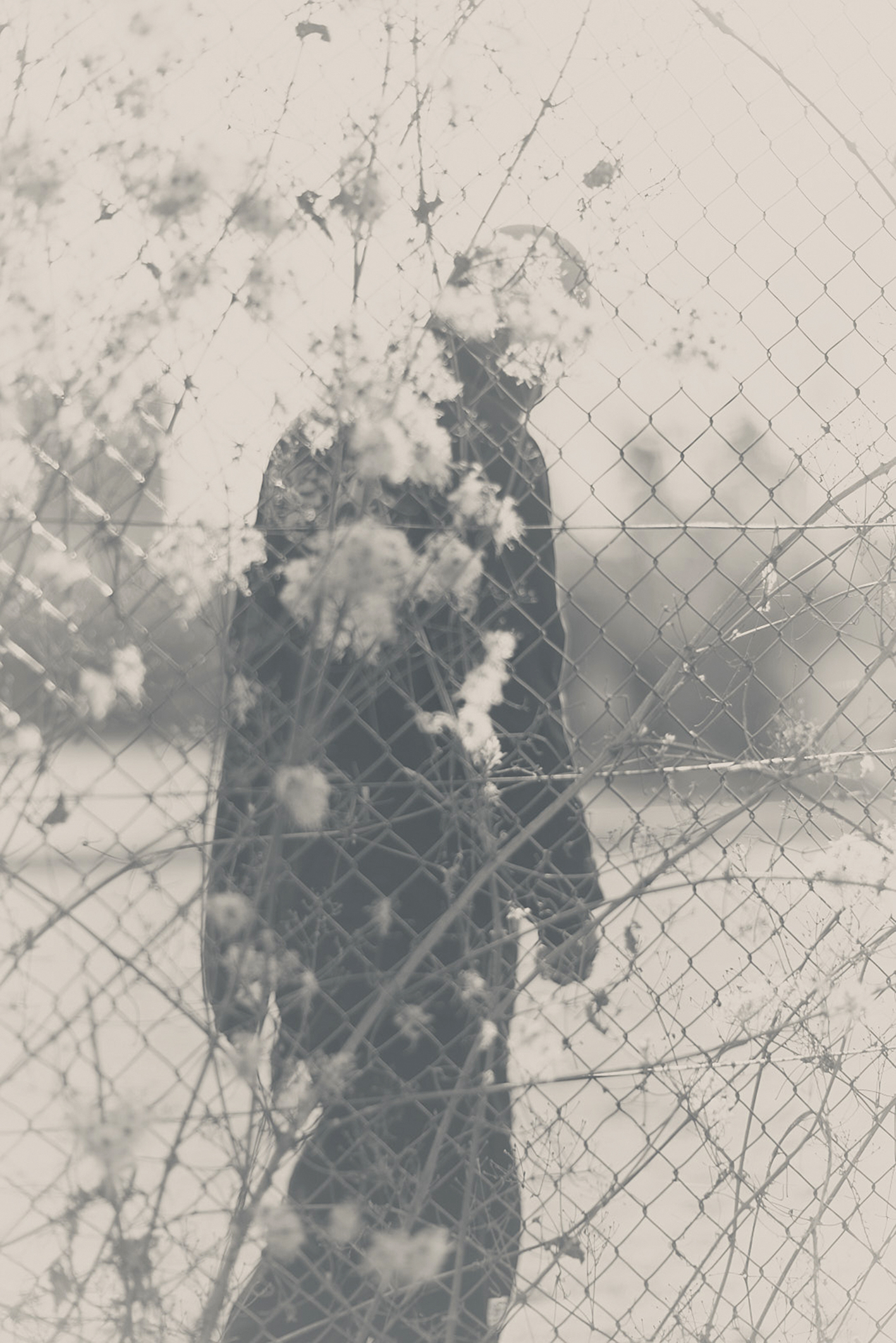
System Verse seems to nod towards ‘80s video game culture with hints of early Yellow Magic Orchestra - or are we completely off the mark?
“The reality is that you are off the mark, but what I love is that everybody will have a different reference point. I mean, it’s all part of the same continuum, so why should I deny what you’ve just said? For me, I’d say System Verse is more leaning towards the Drexciya mythology – it’s not an electro track because it doesn’t have that hard 808 rhythmic style of beat, but I tried to distil a very simple chord feeling and a studied and executed snare sound that’s timed in such a way that it doesn’t need a hi-hat programmed around it. Then again, the reference point is that I was interested in this Leviathan sea creature. I was born in 1979, so VHS is my aesthetic - rewinding gnarled tape.”
We understand you worked with elements of artificial intelligence as far back as 2018. What did that look like and did any AI elements inform the process on Statik?
“Hmm, the AI conversation is interesting because I had a sense of AI when I was super young. For me, this is not a new concept, but I guess it sounds new now because we’re being told about its advent. It’s always been there and I hazard to say that it’s always been in music – not in the sense of creating it, but the user becomes AI.
I’ve tried to skirt the AI conversation now because the cat’s out of the bag
“Computing paraphernalia and text never refers to the person using the computer, but if you think of things in those terms then over time the computer essentially becomes another limb. I wanted to experiment with that because it was obvious that it was going to become part of the conversation in music and I’d moved beyond my formative days of playing around on the groovebox. I’ve tried to skirt the AI conversation now because the cat’s out of the bag. It is what it is and I’m not scared of it because it’s not going anywhere and there is a lot of fun to be had, but for what I do, I don’t feel a particular need to investigate AI too hard.”
Do you still feel it’s a tool rather than something that might overtake some aspects of music-making and become uncontrollable?
“I don’t see where it can be damaging, because it’s about money. Big corporations and record labels are always trying to modify and affect the system and humans aren’t perfect, so what better way than to replace them. If you’ve got Drake, who’s been in the game for 10 years now, his music’s generic as fuck but how can you prolong that money still coming in? By mimicking or essentially creating a model of him they can keep going with it.
“I’m proposing that as a base-level approach, but the reality is, as Drake has experienced with his beef with Kendrick, the human aspect will always win out. The war play of an MC going up against an MC and getting tunes and ideas out is a human interaction – a thought-based activity that a computer can’t out-think even if its calculations are more supreme.”
Actress' Statik is out now on Smalltown Supersound.
